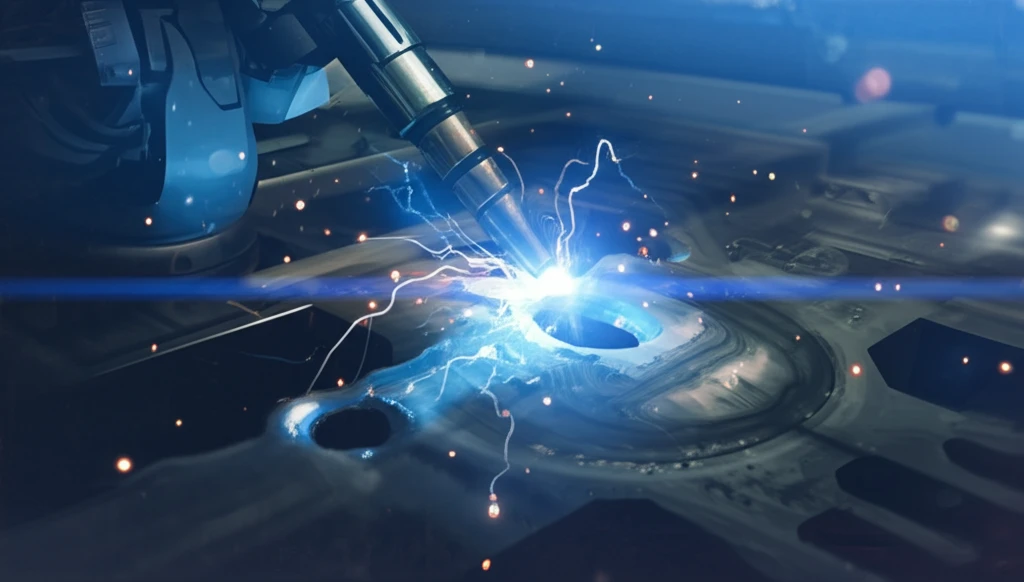
Pulsed Arc Welding: The Secret to Stronger, Cleaner Welds?
"Could pulsed arc welding be the key to unlocking more efficient and higher quality welds in titanium alloys?"
Welding has always been a crucial process across various industries, from building bridges to manufacturing intricate components. Among the different welding techniques, arc welding stands out for its versatility. Traditional direct current (DC) arc welding, however, can sometimes fall short when dealing with materials like titanium alloys, known for their sensitivity to heat input.
Enter pulsed arc welding, a modified technique that introduces a pulsing current. This pulsing action offers improved control over the heat input, leading to potentially enhanced weld quality. But how does it actually work, and what makes it better? Researchers are diving deep into understanding the physics of this process, particularly how it affects the molten pool – the heart of the weld.
A recent study from Beihang University investigated the dynamics of pulsed arc welding in titanium alloys, focusing on the molten pool's surface depression and temperature distribution. Their findings shed light on the advantages of this method, revealing how it can lead to stronger, cleaner welds with improved control over material properties. Let's explore what they discovered and why it matters.
What Makes Pulsed Arc Welding Different?

Traditional DC arc welding applies a continuous current, which can lead to excessive heat buildup, especially in materials like titanium alloys. This excess heat can cause issues such as distortion, unwanted microstructures, and reduced mechanical properties. Pulsed arc welding, on the other hand, uses a current that cycles between high and low levels, providing a 'cool-down' period during each pulse.
- Reduced Heat Input: Less overall heat reduces the risk of distortion and overheating.
- Enhanced Control: The ability to fine-tune pulse parameters allows for optimized weld bead shape and penetration.
- Improved Microstructure: Controlled cooling rates can lead to more desirable microstructures and improved mechanical properties.
- Greater Stability: Pulsing can stabilize the arc, leading to a more consistent and reliable welding process.
The Future of Welding is Pulsed
The Beihang University study provides valuable insights into the benefits of pulsed arc welding, particularly for materials like titanium alloys. By understanding the dynamics of the molten pool and how it's affected by pulsed current, engineers can optimize welding parameters for improved quality, reduced defects, and enhanced control over material properties. As industries continue to demand lighter, stronger, and more reliable components, pulsed arc welding is poised to play an increasingly important role in the future of manufacturing.
